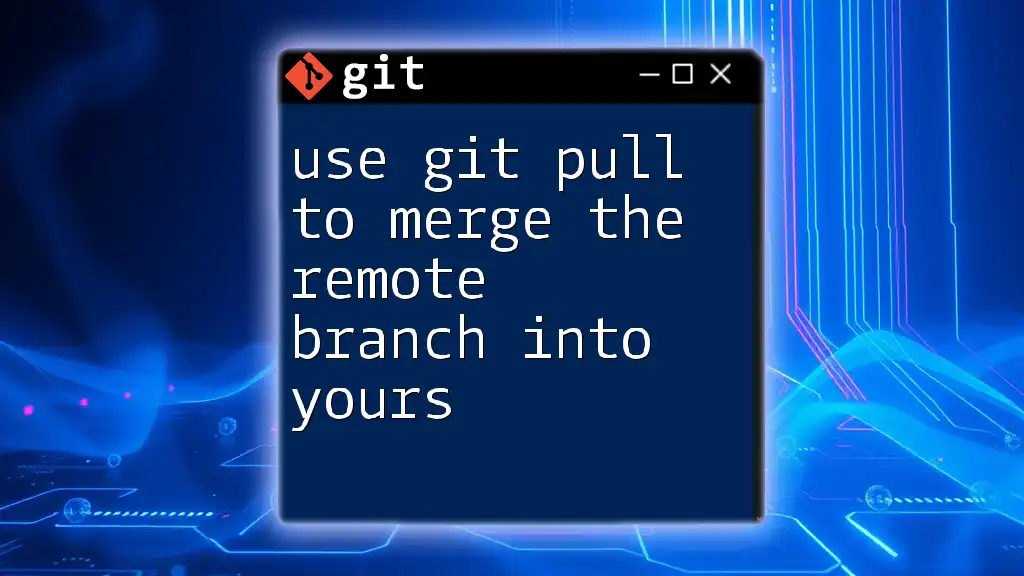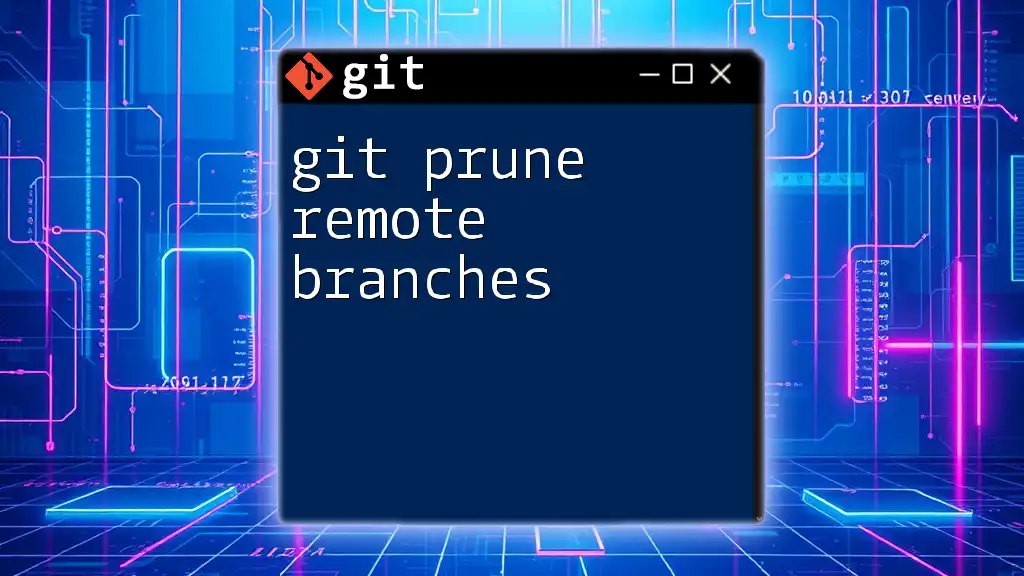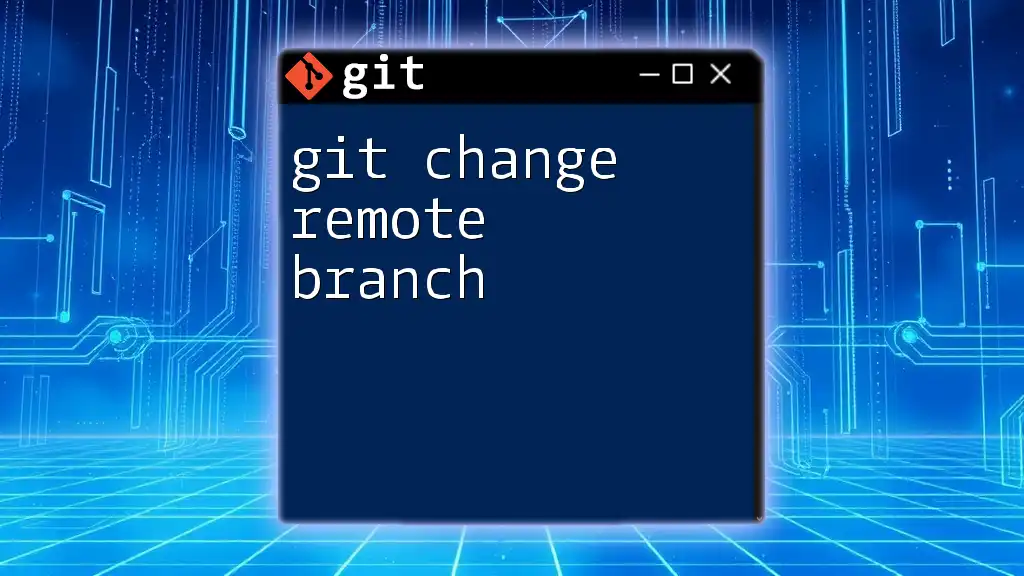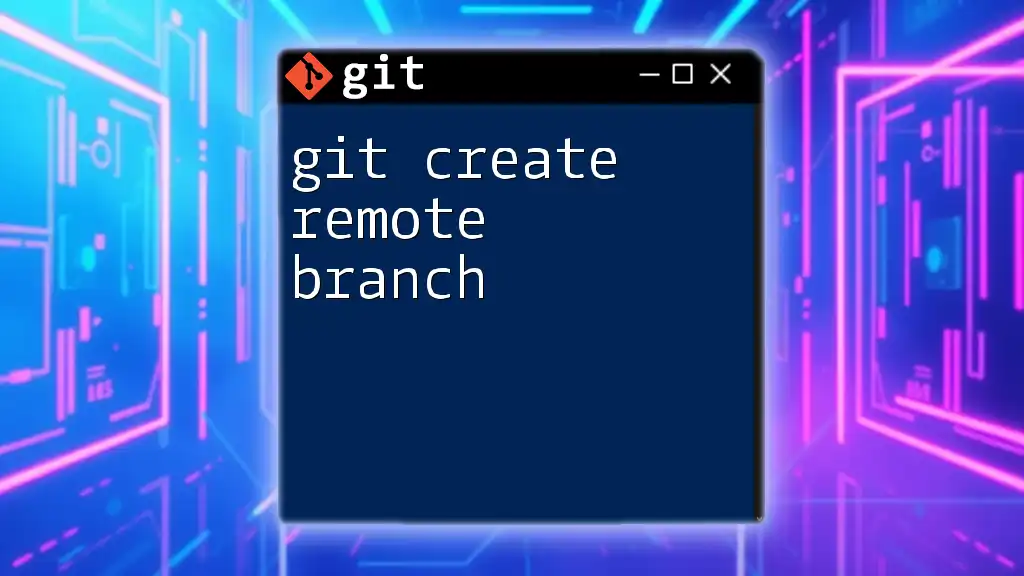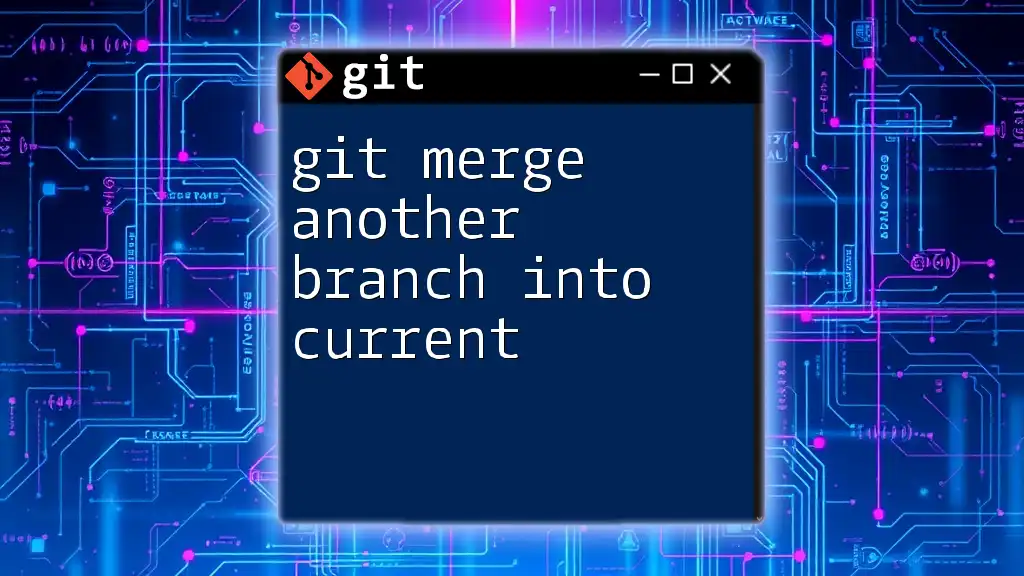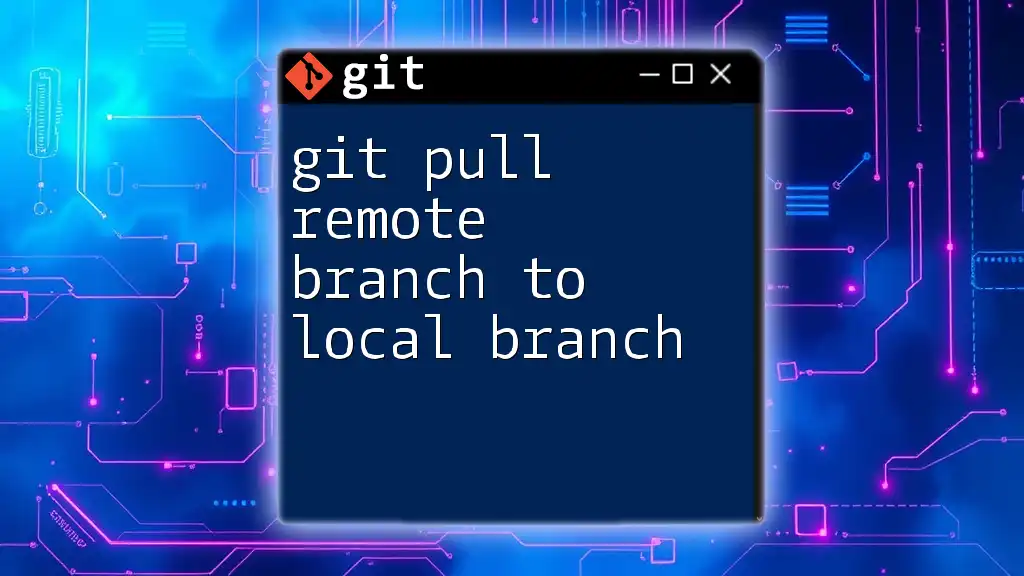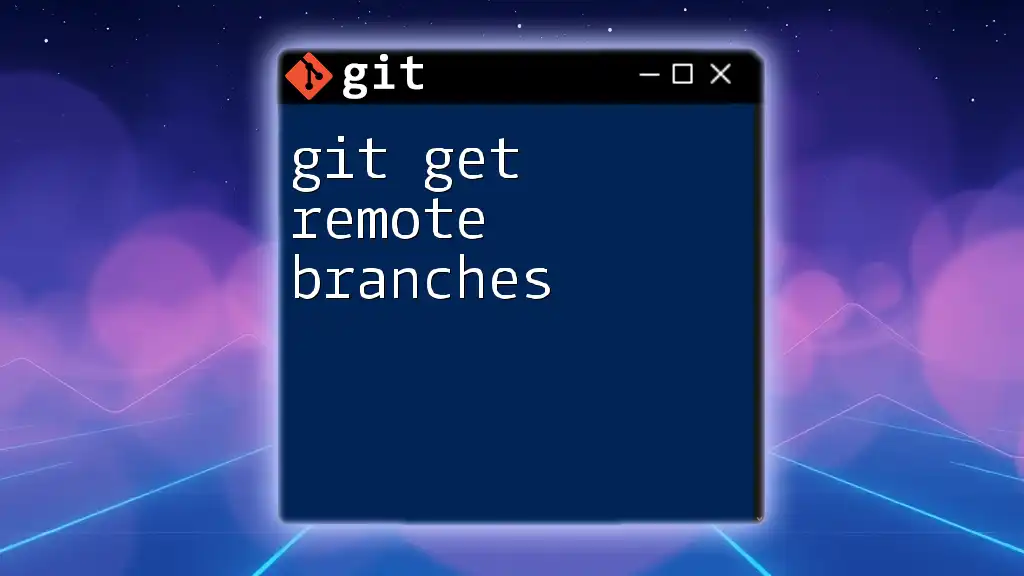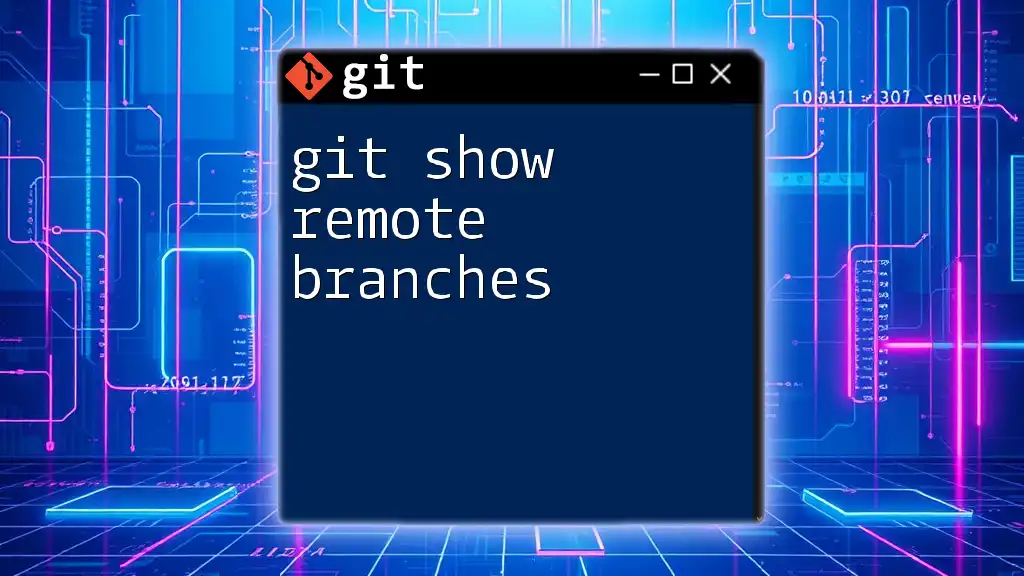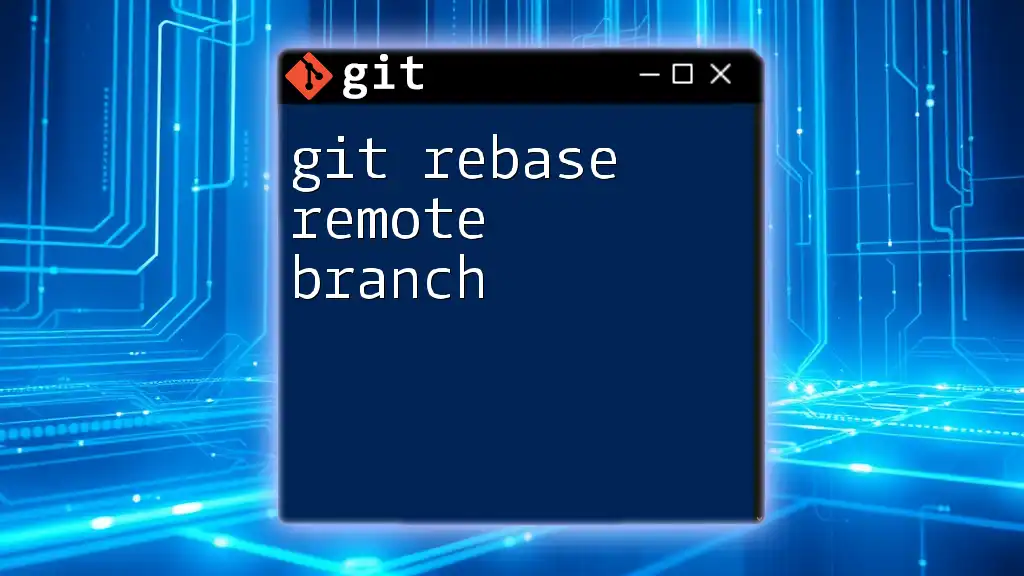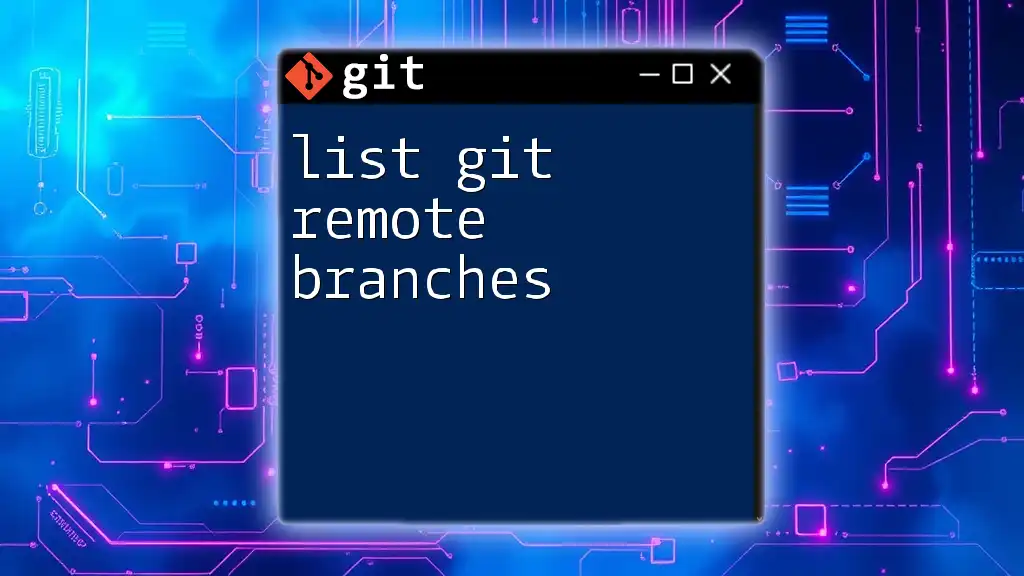To update your local branch with the latest changes from a remote branch, use the `git pull` command, which fetches and merges the remote changes into your current branch.
git pull origin your-branch-name
Understanding the Basics of Git
What is Git?
Git is a distributed version control system that allows multiple developers to work collaboratively on a project. It tracks changes in files and coordinates work among team members, making it an essential tool for software development. Its ability to help manage and keep a history of changes ensures that team members can revert to previous versions if necessary.
Key Terminology
Repository: A repository, or repo, is a data structure that stores metadata for a set of files or directory structure. There are two types of repositories: local (your personal copy) and remote (the version shared among team members).
Branch: A branch in Git represents an independent line of development. People create branches to experiment or work on specific features without affecting the main code base.
Merge: Merging is the process of integrating changes from different branches. When multiple developers work on different branches, merging allows those changes to be consolidated.

The Importance of `git pull`
What Does `git pull` Do?
The `git pull` command is used to fetch and integrate changes from a remote repository into your local working copy. This command combines two other commands: `git fetch`, which retrieves updates from the remote, and `git merge`, which incorporates those updates into your local branch.
When to Use `git pull`
You should use `git pull` when you want to bring your local branch up-to-date with a remote branch. This is especially important in collaborative projects where multiple developers are frequently pushing changes. Regularly pulling changes helps avoid conflicts and ensures that your work is based on the latest codebase.
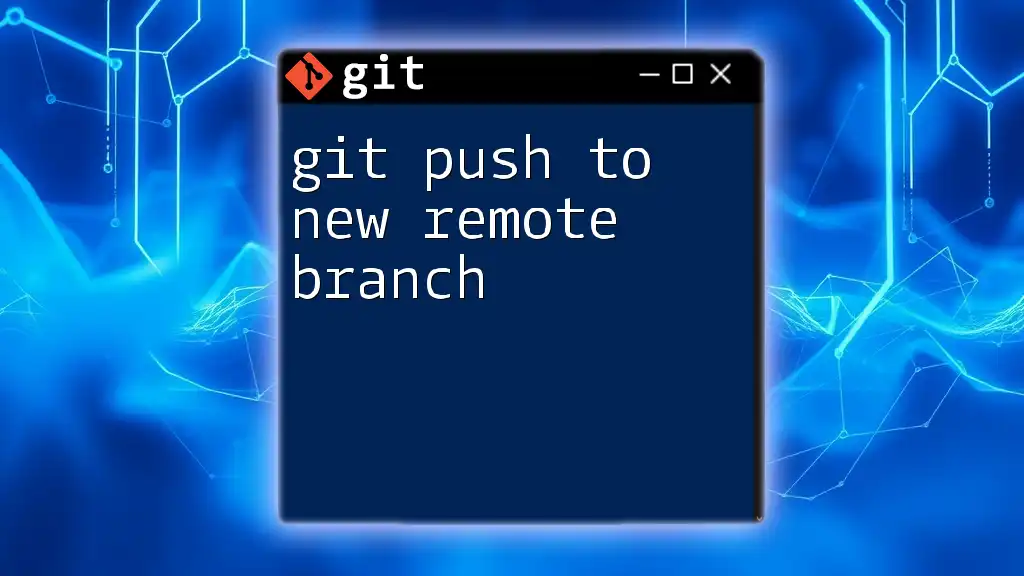
How to Use `git pull`
Basic Usage of `git pull`
The essential syntax for using `git pull` is as follows:
git pull <remote> <branch>
- `<remote>`: The name of the remote repository (commonly `origin`).
- `<branch>`: The name of the branch you want to pull from (e.g., `main`, `develop`).
Step-by-Step Guide
Step 1: Setting Up Your Repository
First, navigate to your Git repository using the command:
cd your-repo-name
This command changes your working directory to the specified repository.
Step 2: Checking Out Your Local Branch
Before executing the pull command, ensure you are on the correct local branch to integrate the remote changes. Use:
git checkout your-branch-name
This switches to the branch where you want to merge the fetched changes.
Step 3: Executing the Pull Command
Now, you can execute the pull command. For example, to pull changes from the `main` branch of the `origin` remote:
git pull origin main
This command fetches the latest changes from the remote `main` branch and merges them into your current local branch.
Configuring Shortcuts (Optional)
For simpler usage, you can configure Git to remember your default remote and branch, which allows you to use `git pull` without specifying them each time. To set this up, you can run:
git config --global branch.autosetupmerge always
This command allows Git to automatically determine the remote branch that corresponds to your local branch when pulling changes.
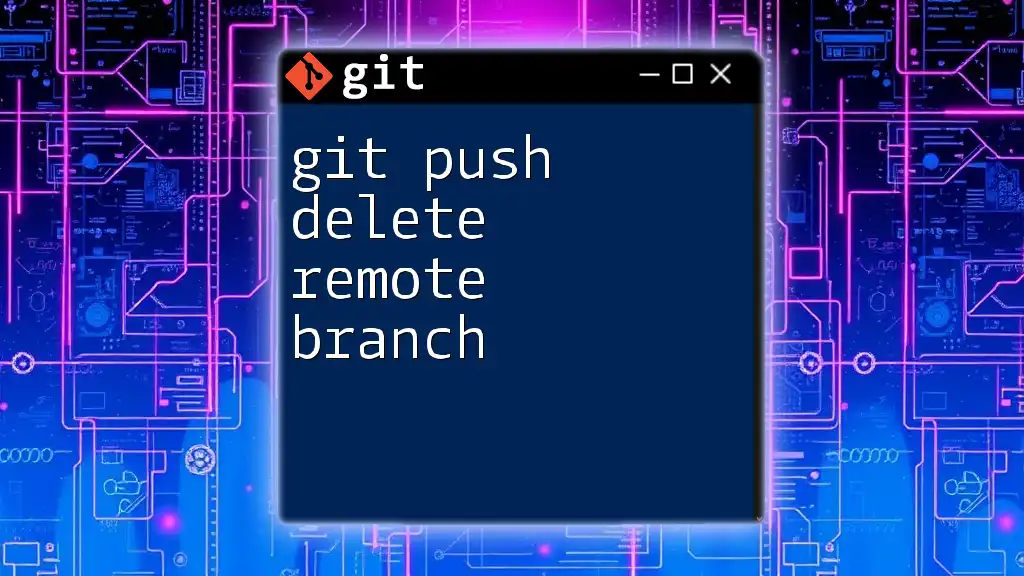
Understanding Merge Conflicts
What is a Merge Conflict?
A merge conflict arises when two branches have changes that affect the same line of a file or when one branch deletes a file that the other branch modifies. This situation requires user intervention, as Git cannot automatically integrate these conflicting changes.
How to Resolve Merge Conflicts
When you execute `git pull`, and a merge conflict occurs, Git will alert you with a message indicating which files are in conflict. Here’s how to resolve it:
-
Identify Conflicted Files: Use `git status` to see which files have conflicts.
-
Open the Conflicted Files: Open the files in a code editor. Git will mark the conflicted areas with conflict markers (`<<<<<<<`, `=======`, and `>>>>>>>`).
-
Review and Edit: Manually edit the file to resolve the conflicts by deciding which changes to keep or whether to combine them.
-
Mark as Resolved: Once you’ve resolved the conflicts, save the file and use:
git add <file-name>to stage the resolved file.
-
Complete the Merge: Finally, commit the changes with:
git commit
Best Practices to Avoid Conflicts
To minimize the risk of merge conflicts:
- Pull Regularly: Frequently perform `git pull` to keep your local branches updated with remote changes.
- Clear Commit Messages: Use descriptive and concise commit messages to help other team members understand your changes.
- Communicate with Team Members: Notify your team when you’re working on specific features to avoid overlapping changes.
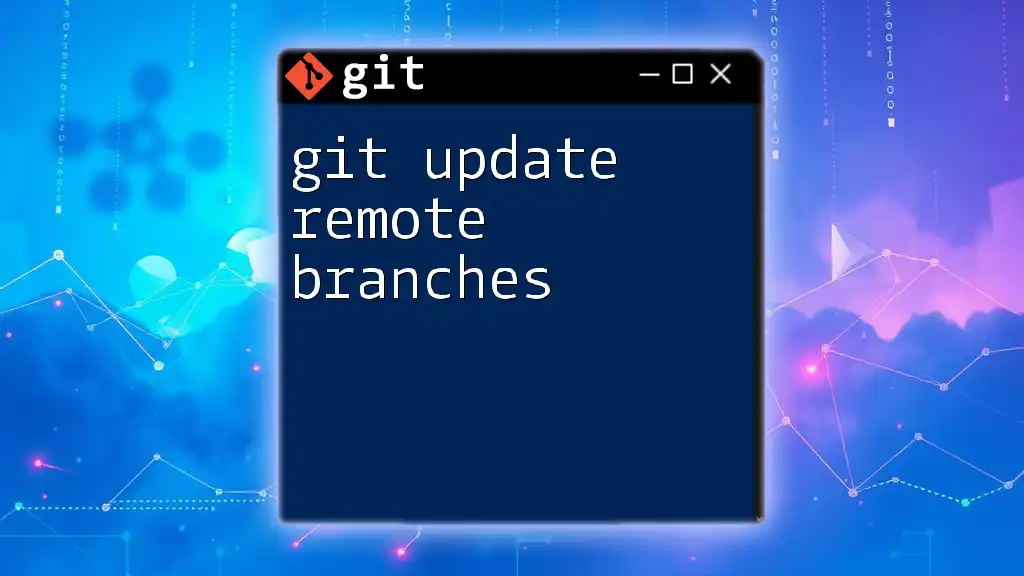
Verifying Successful Pull
Checking the Status of Your Branch
After executing a pull command, it's essential to verify that the pull was successful. Use:
git status
This command will inform you if your branch is up to date or if there are still any merge conflicts.
Viewing Commit History
You can further verify the merged changes by viewing the commit history. Use:
git log --oneline --graph
This command presents a visual representation of your commits and shows how your branch has been updated with new changes.
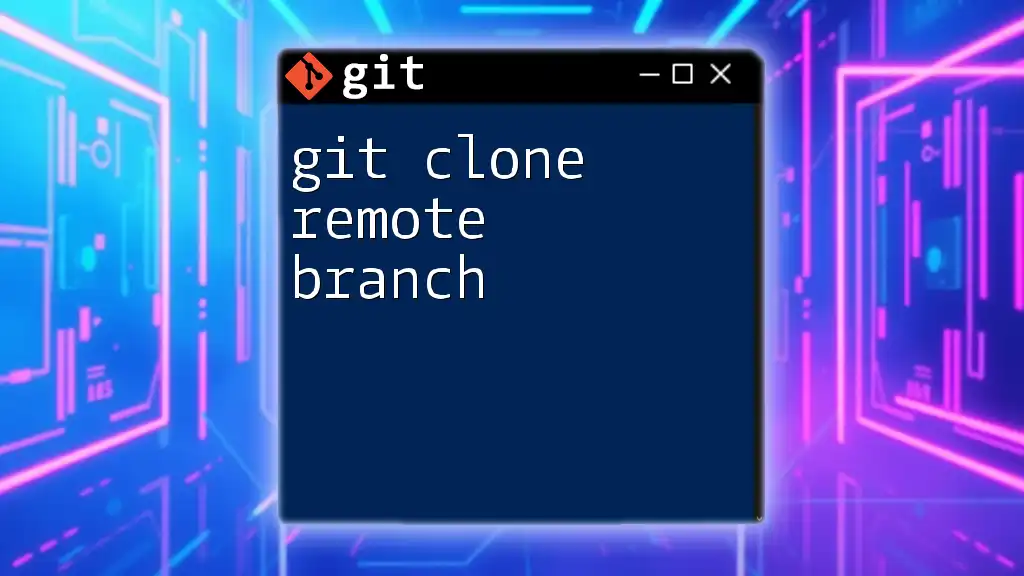
Conclusion
In this guide, we delved into how to use git pull to merge the remote branch into yours effectively. By understanding the significance of this command and following the outlined steps, you will streamline your workflow and enhance collaboration with your team. Incorporating regular pull practices not only keeps your work synchronized but also minimizes conflicts, enabling a smoother development process.
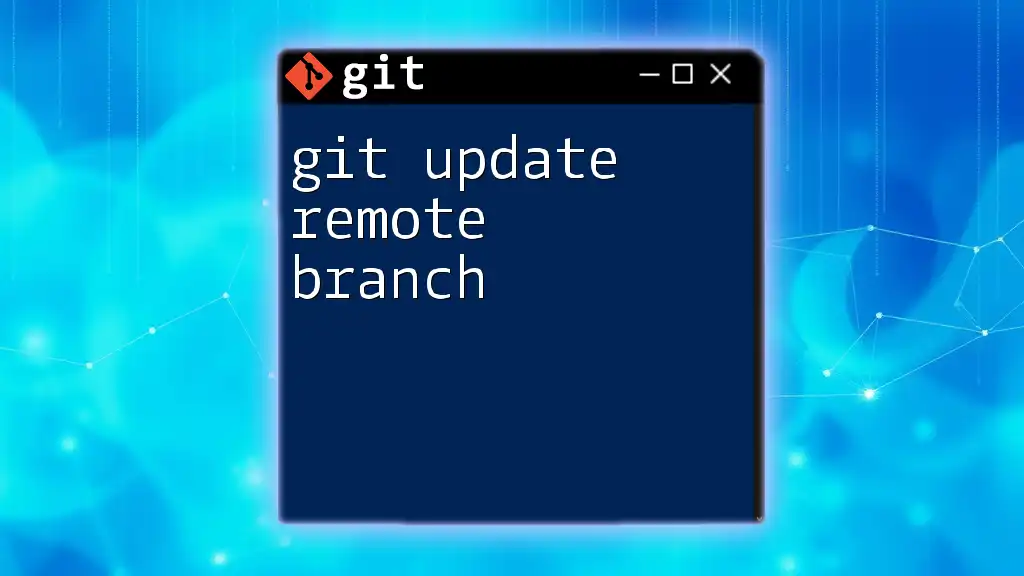
Frequently Asked Questions (FAQs)
What Happens If I Forget to Pull Before Pushing?
If you attempt to push changes without pulling first, you may run into issues if the remote branch has been updated. Git will prevent your push and notify you that your local branch is behind the remote. In such cases, you'll need to perform a `git pull` to merge the remote changes before trying to push again.
Can I Undo a `git pull`?
Yes, if you’ve pulled changes that you didn’t intend to merge, you can revert the pull by resetting your branch to a previous state. Use:
git reset --hard HEAD@{1}
However, be cautious with this command, as it will discard all local changes made since the pull.
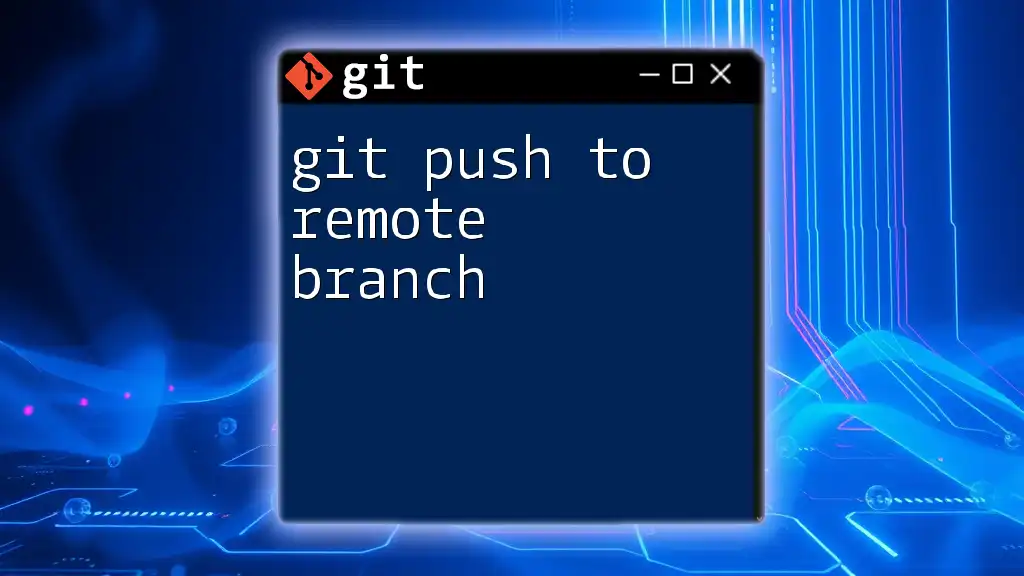
Additional Resources
For further insight and enhancement of your Git skills, consider exploring the following resources:
- Official Git documentation for in-depth command details.
- Online Git tutorials or courses for structured learning.
- Git GUI tools to simplify version control tasks.

